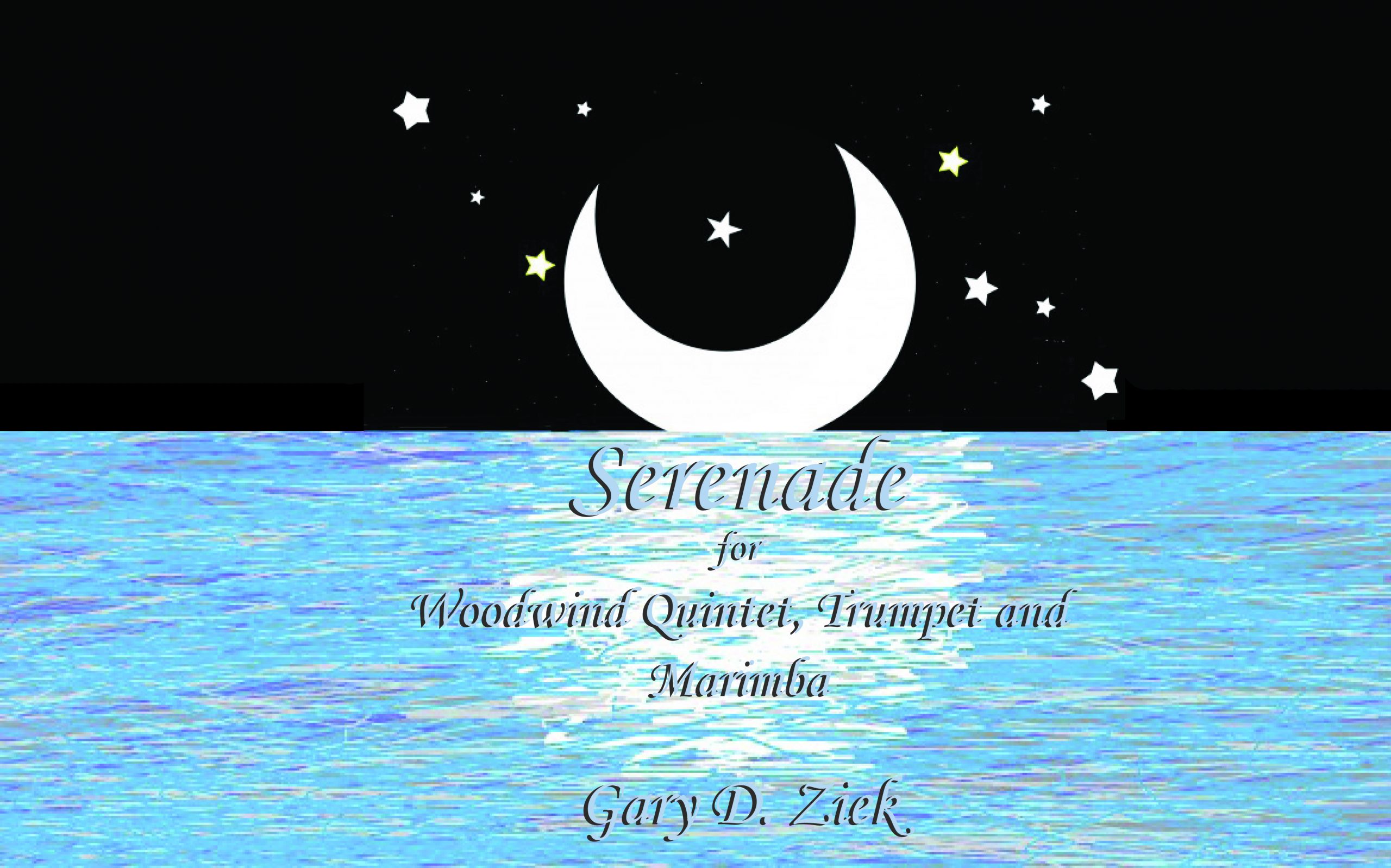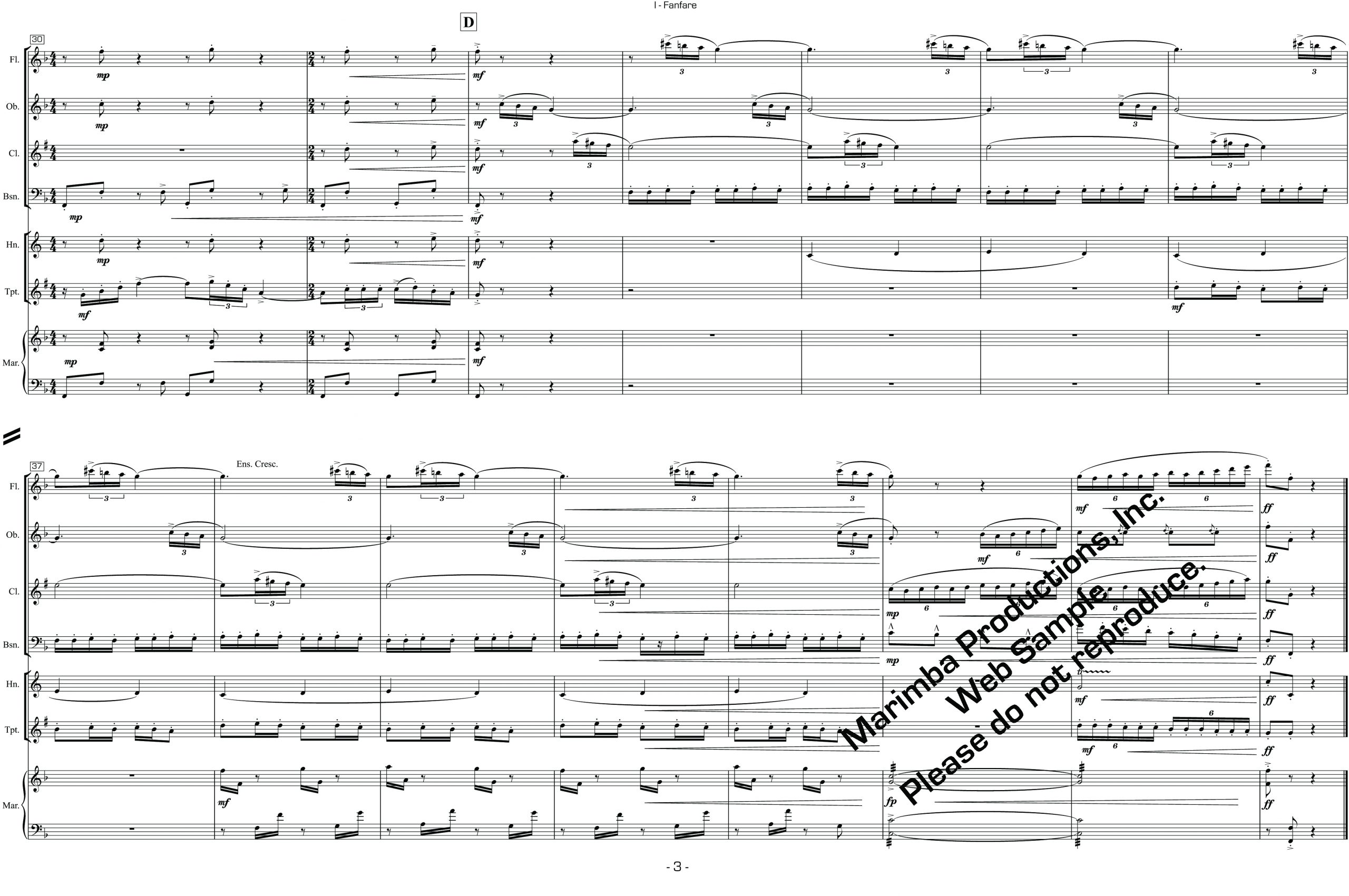Serenade is in six movements, written in contrasting styles. The first, named “Fanfare,” is cheerful in character and based on a series of four-note fanfares. Movement two, “March,” is in six-eight time. The third movement, “Intermezzo,” features the plaintive sound of the English horn. Movement four, “Caccia,” utilizes an ABA form with clarinet, bassoon and horn playing a broad harmonized melody over a pulsating marimba accompaniment. Movement five, “Lullaby,” features a simple melody in the horn part. The Finale, “Presto,” is a bravura showpiece for the entire ensemble.
Gary Ziek, Professor of Trumpet and Director of Bands at Emporia State University in Kansas, has composed multiple works featuring trumpet in various settings, as well as compositions for other brass instruments and for band. “Serenade” is a septet scored for woodwind quintet, trumpet and marimba, but is not a marimba “feature.”
Parts are distributed equitably across the ensemble, and the instruments take turns in the foreground and background of the texture. Percussionists purchasing the work should be prepared to read from a traditional (non-transposed) score.
With only cursory research, I’ve concluded that Ziek’s compositional language is remarkably tonal and neoclassical in nature. “Serenade” is no exception. Scored in six movements, each is written in contrasting style. The first, “Fanfare,” is lively and uses a series of four-note motives as its departing point. It requires a quick tongue for wind players and Ziek’s experience seems favorably suited to this kind of writing. The second movement, a march, is in 6/8 and in G minro, and contains some of the quicker marimba runs of the piece. The third, “Intermezzo,” requires the oboist to play English horn. This .
My favorite movement is VI, “Rain Forest,” where the soprano saxophone gets to play bird calls and other rainforest-like sounds. The marimba has a nice groove with consistent technique throughout. Any of the movements could be played independently, and they range in duration from two to four minutes each. This work could teach a young duo a lot about balance and chamber music, while filling a space on a sophomore or junior recital.cor anglaise melody is first heard over a bassoon ostinato, leading to a welcome develpmental section before a recapitulation. In similar fashion, the “Caccia” movement also uses an arch form. The outer sections feature a spirited romp between the instruments in 12/8. The middle of the form has clarient, bassoon and horn playing a harmonized melody over a marimba pedal point.
Movement five, “Lullaby,” is underpinned by marimba with a I, III, ii, V7 progression in E-flat mmajor. There are fragmentary melodic ideas in the horn and other winds, but nothing ever steps across a barline or out of the chord progression. The finale, “Presto,” is a five-part rondo and features more demanding passages for the winds. The marimbist misses out on the fun, though, and doesn’t get the virtuosic lines handed to the rest of the ensemble.
The instrumental writing is moderately difficult and a tad reptitious. The trumpeter would need sensitivity to balance, given the orchestration. A college-level marimbist will find the part exectuable. Unfortunately, the marimba writing is not incredibly inventive regarding chordal structure and voicing. The wind parts would benefit by being liberated from a certain rigidity to the melodic and metric form, especially in the slow movements. For this reason, my impression is that expressively the music feels “contained,” perhaps held back by a lack of compositional sophistication. The finale might be the exception with longer, sweeping lines, more oblique motion and fewer unisons. Some chromaticism here and a little risk-taking go a long way in a piece otherwise fraught with “safe” instrumental writing.
Intermediate marimbists searching for a piece of chamber repertoire that is not too taxing with nice stylistic caricatures might look to “Serenade.” Lines are lyrically playful and easy to digest; dissonances are conservative. Big drawbacks include a lack of narrative development and harmonic tension/resolution, meaning it’s not a game-changing addition to the repertoire. However, it’s nice to see attention given to the marimba in a chamber setting as an equal partner and not a novelty instrument.
— Phillip O’Banion, Percussive Notes — July 2017




























